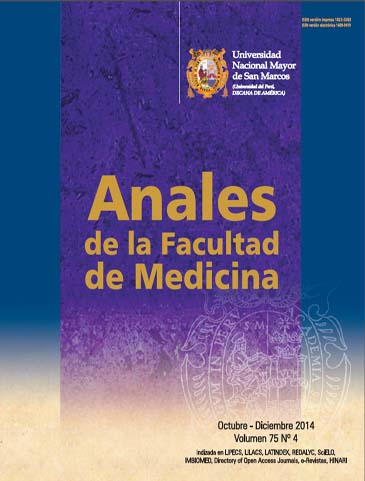Endothelium and woman: similitude and differences with man
DOI:
https://doi.org/10.15381/anales.v75i4.10855Keywords:
Endothelium, vascular sex differences, estrogens and endotheliumAbstract
There are intra-sexual differences in both endothelial function and dysfunction. Although both sexes share the same hormonal receptors (estrogen and testosterone receptors) these differ in expression. Female estrogen receptors exert vascular protective action through nitric oxide–mediated genomic and non-genomic pathways. Women are ‘protected’ from atherothrombosis until menopause. The abrupt loss of vascular protection leads to a magnification of post-menopausal vascular damage, which is higher when endothelial dysfunction is already present. Women have a less oxidative vascular environment until menopause than men. Women experience more microvascular angina and less myocardial infarction with ST segment elevation, because they display more endothelial dysfunction when risk factors are present. Post-menopausal women develop more prominently systolic hypertension and therefore higher pulse pressure and arterial stiffness, the latter mediated by nitric oxide. Keywords: Endothelium, vascular sex differences, estrogens andDownloads
Published
2014-12-31
Issue
Section
Simposio función endotelial
License
Copyright (c) 2014 Enrique Melgarejo R.

This work is licensed under a Creative Commons Attribution-NonCommercial-ShareAlike 4.0 International License.
Those authors who have publications with this magazine accept the following terms:
- Authors will retain their copyrights and guarantee the journal the right of first publication of their work, which will be simultaneously subject to Creative Commons Attribution License that allows third parties to share the work as long as its author and its first publication this magazine are indicated.
- Authors may adopt other non-exclusive licensing agreements for the distribution of the version of the published work (eg, deposit it in an institutional electronic file or publish it in a monographic volume) provided that the initial publication in this magazine is indicated.
- Authors are allowed and recommended to disseminate their work over the Internet (eg: in institutional telematic archives or on their website) before and during the submission process, which It can produce interesting exchanges and increase quotes from the published work. (See El efecto del acceso abierto ).
How to Cite
1.
Melgarejo R. E. Endothelium and woman: similitude and differences with man. An Fac med [Internet]. 2014 Dec. 31 [cited 2024 Jul. 17];75(4):339-43. Available from: https://revistasinvestigacion.unmsm.edu.pe/index.php/anales/article/view/10855















